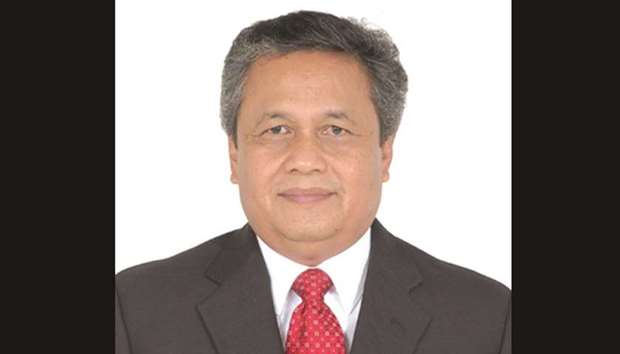Indonesian policymakers are sticking with an inflation-fighting mandate despite an aggressive run of easing that’s had little success so far in boosting growth in Southeast Asia’s biggest economy.
“Inflation will continue to be our main focus, achieving the target set by the government,” Bank Indonesia deputy governor Perry Warjiyo said in an interview on Monday. “We will continue to anchor our interest rate policy and monetary policy to support that objective.”
Bank Indonesia lowered its policy rate for a second straight month in September amid a low inflation environment that’s enabled eight cuts since the beginning of last year. While Indonesia’s economy is growing at about 5%, it remains well below the 7% goal President Joko Widodo set when he came into office three years ago.
Warjiyo said that growth, supported by infrastructure development, will pick up over the coming years and 5.3% is “achievable” in 2018. “In 2019, with productivity gain, I think we can go to even 5.7%,” he said.
While consumer price growth in September was 3.7% from a year earlier and within the bank’s 3% to 5% goal, it’s expected to become more tame in the years ahead. The central bank is set to narrow the target to 2% to 4% from 2020, Warjiyo said, with the economy entering a phase in which inflation is “comparable to our peer group.” “We consider our interest rate setting now is in the neutral position,” Warjiyo said, while adding that in terms of liquidity and macroprudential settings the central bank’s policy is “accommodative.” Another senior official said Friday that the room for cutting rates further “is becoming narrower.”
The central bank will still intervene in the foreign-exchange market to support the currency, Warjiyo said, but insisted that wasn’t aimed at “achieving a certain target of the exchange rate.” The rupiah, which slumped to a 10-month low against the dollar last week after foreign investors sold off government bonds and stocks, strengthened 0.1% yesterday to 13,504 per dollar as of 2:15pm local time. Warjiyo said the bank might also intervene when the exchange rate in real terms deviates from fundamental levels or there’s a risk that inflation either undershoots or overshoots the target.

Warjiyo: Growth, supported by infrastructure development, will pick up over the coming years and 5.3% is u201cachievableu201d in 2018.


